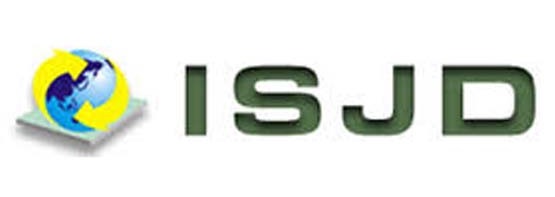PERAN SELENIUM PADA DIARE AKUT
Abstract
Diare cair akut merupakan salah satu manifestasi gangguan fungsi saluran cerna. Umumnya episode diare adalah akut, bila berlangsung lebih dari 14 hari disebut diare persisten. Diare masih merupakan penyebab kematian utama pada bayi dan anak di Indonesia. Menurut Riset Kesehatan Dasar yang diselenggarakan Departemen Kesehatan Republik Indonesia, berdasarkan penyakit menular, diare menempati urutan ketiga setelah tuberkulosis dan pneumonia. Di Indonesia, dilaporkan tiap anak mengalami diare sebanyak 411 per 1000 episode per tahun dengan angka kesakitan dan kematian masih tetap tinggi. Oleh karena itu, diperlukan penanganan yang komprehensif dan rasional. Penelitian mendapatkan bahwa defisiensi mikronutrien tertentu dapat berhubungan dengan penyakit diare. Penelitian mengenai zink telah banyak diketahui, namun hanya sedikit penelitian tentang mikronutrien yang lain seperti selenium yang diduga juga terlibat dalam proses diare akut.
Penyakit gastrointestinal dinilai sebagai suatu stress oksidatif. Selenium yang mengandung enzim gastrointestinal glutathione peroxidase (GPx2/ GPx GI) yang paling banyak ditemukan dalam mukosa epitel traktus gastrointestinal. Pada diare terjadi defisiensi selenium yang dapat meningkatkan stress oksidatif dan menurunkan differensiasi dan proliferasi sel T dan menurunkan toksisitas limfosit T. Hal ini memunculkan hipotesis bahwa selenium memegang peranan dalam proses penyembuhan diare akutKeywords
Full Text:
PDFReferences
Santosa B. Tatalaksana diare cair akut dalam naskah lengkap Kongres Nasional III Badan Koordinasi Gastroenterologi Anak Indonesia. In: Penanganan optimal masalah saluran cerna dan hati pada anak. Surabaya: BGKAI, 2007, pp. 35–45.
Subagyo B, Santoso N. Diare Akut. In: Juffrie M, Soenarto S, Oswari H, et al. (eds) Buku ajar Gastroenterologi- hepatologi. Jakarta: IDAI, 2010, pp. 87–120.
Kementerian Kesehatan Republik Indonesia. Situasi Diare di Indonesia. Jakarta, 2011.
Brown. Diarrhea and malnutrition. J Nutr. 2003; 133: 328–332.
Aggarwal R, Sentz J, Miller MA. Role of zinc administration in prevention of childhood diarrhea and respiratory illnesses: A meta-analysis. Pediatrics. 2007; 119: 1120–1130.
Ölmez A, Yalçin S, Yurdakök K, Coşkun T. Serum selenium levels in acute gastroenteritis of possible viral origin. J Trop Pediatr. 2004; 50: 78–81.
Ramig R. Pathogenesis of Intestinal and Systemic Rotavirus Infection. J Virol. 2004; 78: 10213–10220.
Womack NC. Treatment of diarrhea. Geneva: World Health Organization, 2005. Epub ahead of print 2005. DOI: 10.1097/00007611-192408000-00004.
Ferencik M, Ebringer L. The modulatory role of selenium and zinc on the immune system. Klin Imunol a Alergol. 2002; 12: 9–18.
Journal A, Biotechnology OF. The role of micronutrients in child health : A review of the literature The role of micronutrients in child health : A review of the literature. African J Biotechnol. 2016; 7: 3804–3810.
Tinggi U. Selenium: Its role as antioxidant in human health. Environ Health Prev Med. 2008; 13: 102–108.
Satoto. Selenium dan kurang yodium. J GAKY Indones (Indonesian J IDD). 2002; 1: 33–42.
Fan AM, Kizer KW. Selenium. Nutritional, toxicologic, and clinical aspects. West J Med. 1990; 153: 160–167.
Litov RE, Combs GF. Selenium in pediatric nutrition. Pediatrics. 1991; 87: 339–351.
MacFarquhar JK, Broussard DL, Melstrom P, Hutchinson R, Wolkin A, Martin C, et al. Acute selenium toxicity associated with a dietary supplement. Arch Intern Med. 2010; 170: 256–261.
Ibs K-H, Function ZI, Rink L. Selenium in the immune system. Sci York. 2003; 133: 1452S–6S.
Zoidis E, Seremelis I, Kontopoulos N, Danezis GP. Selenium-dependent antioxidant enzymes: Actions and properties of selenoproteins. Antioxidants. 2018; 7: 1–26.
Jurkovič S, Osredcar J, Marc J. Molecular impact of glutathione peroxidases in antioxidant processes. Biochem Medica. 2008; 18: 162–174.
Thomson CD. Assessment of requirements for selenium and adequacy of selenium status: A review. Eur J Clin Nutr. 2004; 58: 391–402.
Kiremidjian-Schumacher L, Roy M, Wishe HI, Cohen MW, Stotzky G. Supplementation with selenium and human immune cell functions - II. Effect on cytotoxic lymphocytes and natural killer cells. Biol Trace Elem Res. 1994; 41: 115–127.
Beck M a, Levander O a, Handy J. Oxidative Stress Mediated by Trace Elements Selenium Deficiency and Viral Infection 1. J Nutr. 2003; 133: 1463–1467.
Beck MA. Nutritionally induced oxidative stress: Effect on viral disease. Am J Clin Nutr. 2000; 71: 1676–1679.
Bass DM. Rotavirus, Caliciviruses and Astroviruses. In: Kliegman RM, Geme JWS, Blum NJ, et al. (eds) Nelson Texbook of Pediatrics. Philadelphia: Elsevier, 2020, p. 7022.
Wingler K, Mu C. Gastrointestinal Glutathione Peroxidase Prevents Transport of Lipid Hydroperoxides in CaCo-2 Cells ¨. 2000; 420–430.
Boyne R, Arthur JR. The response of selenium-deficient mice to Candida albicans infection. J Nutr. 1986; 116: 816–822.
Kiremidjian-Schumacher L, Roy M, Wishe HI, Cohen MW, Stotzky G. Regulation of cellular immune responses by selenium. Biol Trace Elem Res. 1992; 33: 23–35.
Kiremidjian-Schumacher L, Roy M, Wishe H, Cohen M, Stotzky G. Selenium and Immune Cell Functions. Proc Soc Exp Biol Med. 1990; 193: 136–42.
DOI: http://dx.doi.org/10.32883/hcj.v5i4.771
Refbacks
- There are currently no refbacks.

This work is licensed under a Creative Commons Attribution 4.0 International License.
HUMAN CARE JOURNAL
Published by Universitas Fort De Kock, Bukittinggi, Indonesia
© Human Care Journal e-ISSN : 2528-665X P-ISSN : 2685-5798














